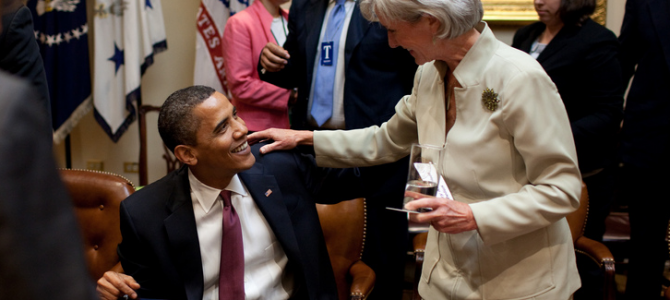How do we determine if Obamacare is working? Well, the most basic metric of success – exempting President Obama’s many promises on lower costs, better coverage, and a host of other issues – would be signing up uninsured people, and coming out of the implementation process with more people insured than before. The administration long ago backed away from any claim that the basis on which Obamacare was sold – not coverage, but cost – will actually be delivered on, as Kathleen Sebelius acknowledged again this week. But at its most basic, you’d think that handing out subsidized insurance via a massive and well-funded marketing campaign and a signup effort spearheaded by Obama’s political team would have a large degree of success in getting people covered.
The administration has trumpeted a Gallup poll which shows the percentage of insured Americans rebounding to 2009 levels. But if indications from other sources are accurate, Obamacare is failing even this most basic measure of success:
The new health insurance marketplaces appear to be making little headway in signing up Americans who lack insurance, the Affordable Care Act’s central goal, according to a pair of new surveys. Only one in 10 uninsured people who qualify for private plans through the new marketplaces enrolled as of last month, one of the surveys shows.
The McKinsey report here is particularly damning – and I think it’s telling that despite this, HHS itself referred reporters to it when asked about the percentage of enrollees who were previously uninsured (according to McKinsey, just 27%). McKinsey also indicates that 47% of those who were previously uninsured selected a plan, but have not yet paid a premium. Bob Laszewski has more:
As I reported on this blog yesterday, starting with the administration’s more recent enrollment total of 4 million, less than 15% of the 17.2 million people the Kaiser Family Foundation has estimated are eligible for subsidies have signed-up and paid for coverage––and many of these people who were eligible for subsidies were also previously insured. The uninsured just aren’t buying Obamacare. I believe they are not buying it because the premium–even net of the subsidies–is too much for plans that have deductibles that are too high… People are often being asked to pay hundreds of dollars per month in premium, net of subsidies, and they don’t see the value.
The government could counter these external reports with data, but HHS has said they have no idea how many uninsured are signing up for Obamacare (which would kind of be a thing you’d like to know). But they also claim to not even know how many people have paid for their coverage – again maintaining ignorance on this subject, despite insurer insistence that they ought to know:
The White House insists it doesn’t know how many people are fully enrolled in Obamacare, but insurers say they’ve handed over enough data to show that the sign-up numbers are not as rosy as federal officials say.
The latest administration figures show that 4.2 million people have selected health plans in the new insurance markets. Insurance industry officials at four of the big national health plans tell POLITICO that about 15 to 20 percent of people who have signed up have not yet paid their first monthly premium — the final step to get coverage. And they’ve told the White House that, too, insurance industry officials say. “They have a lot more information than they’re letting on,” one industry source said of the Obama administration. “They have real hard data about the percent that have paid … If they have not processed those yet and compiled the data, that is a choice they are making. But they have that data now.”
It’s up to you whether you believe the insurers or the administration. The White House has every reason to hide the percentage of people who’ve paid for Obamacare if it’s bad. They’d trumpet the figure if it was good.
So back to the original question: will more uninsured people get covered? Well, one way to consider it is by comparing the number of people getting covered by the end of open enrollment compared to those who lost insurance due to Obamacare in the first place. There’s been disagreement about this number: note this recent post at Health Affairs, which suggested that number was 2.6 million. Previously, the AP had reported 4.7 million cancellations. But the problem is that the chief reason to believe that 2.6 million figure is to start with the 14 million non-group market – not the 19 million indicated by the Current Population Survey (Table C-3 shows 30.6 million total persons with such “direct purchase” coverage, of which 11.2 million are elderly). That makes the higher number look closer to the truth.
So if that’s how big the marketplace was to begin with, the assumptions regarding Medicaid signups are accurate, and the percentages of those paying for their plans noted by Laszewski and McKinsey are correct… Obamacare may actually end up having had no significant net positive impact on the number of insured Americans. Which is pretty amazing, when you stop to think about it. Democrats have to be looking around and asking: did we really go through all this political hell just to lower the uninsurance rate by two or three percentage points?
The consequences of Obamacare were supposed to be dramatic: a significant increase in the number of uninsured people getting insurance, improved coverage and better access to quality care, and most importantly of all, lower premiums for the overwhelming majority of Americans. The reason Obamacare will continue to be a political liability is because it has failed to match up with these expectations in virtually every way. So long as that reality doesn’t match up with expectations – so long as there are more “losers” than “winners” under the law – it will be vulnerable to attack.









